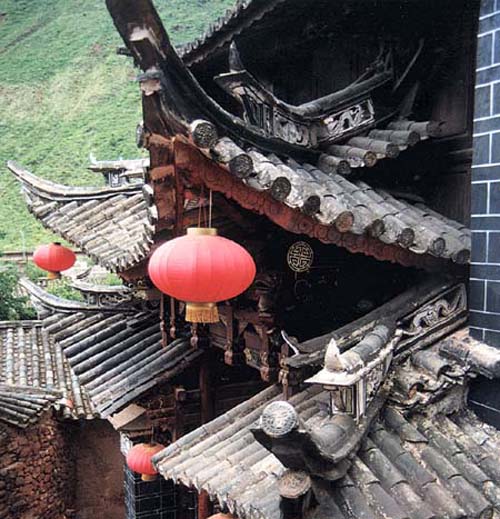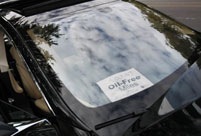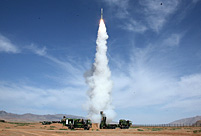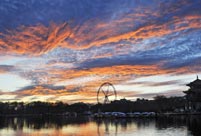 |
| (file photo) |
Located in Lufeng, Chuxiong Prefecture of Yunnan, Heijing Old Town used to be a place where high-quality salt is produced in ancient times. As a small town hiden in Longchuanjiang River Valley for almost a century, Heijing is one of the top four old towns in Yunnan.
Heijing has been listed as one of "Chinese Historical and Cultural Towns" and is a state 3A-level scenic spot. Situated in the center of Yunnan Province, about 60 kilometers to the west of capital Kunming, Heijing nevertheless belongs to another time and place: its streets are narrow, cobble-stoned and festooned with red lanterns; and donkey carts are still the most popular means of its transportation.
The well-preserved ancient architectures and historical relics act as the quintessence of the Ancient Town. Some are: the Compound of Family Wu, Dalong Shrine, Heiniu Salt Well and Ancient Salt Workshop etc.
Heijing's gentry were not ungrateful. Many temples dot the town. The largest, Feilai Temple, overlooks the townscape from the west. Dalongci Shrine is the masterpiece of the ancient architectures in Heijing. What is the most impressive is a plaque hung on the ceiling of the main hall with an inscription by Emperor Yongzheng of the Qing Dynasty (1644-1912). It reads "Ling Yuan Pu Ze," a royal praise for Hejing’s contributions to salt production bringing great benefits to the country. On Heijing's western side, the Wu family mansion is up on the mountain to catch the early morning sun. It is preposterously built in the shape of the Chinese character 王 ("king"). It claims 108 rooms, a propitious number. The pavilions and cloisters are all connected and make you feel as if you are entering a labyrinth.
 National Plug In Day celebrated in Washington D.C.
National Plug In Day celebrated in Washington D.C. New model of indigenous surface-to-air missiles testfired
New model of indigenous surface-to-air missiles testfired  118.28-carat diamond to be auctioned in HK
118.28-carat diamond to be auctioned in HK Maternal love under streetlight
Maternal love under streetlight Naked foreign student sits in the middle of a road in Haikou
Naked foreign student sits in the middle of a road in Haikou  Colorful Yunnan: Enjoy the natural beauty
Colorful Yunnan: Enjoy the natural beauty Harbin named Chinese city with most beautiful women
Harbin named Chinese city with most beautiful women For last four students, teacher couple sticks to post on island
For last four students, teacher couple sticks to post on island  When big sport stars were kids
When big sport stars were kids PLA's 38th Group Army conduct training
PLA's 38th Group Army conduct training People mourn for victims of mall attack
People mourn for victims of mall attack The last days of Wan Aihua
The last days of Wan Aihua Highlights at 12th National Games of China
Highlights at 12th National Games of China Beijing Film Academy welcomes freshmen
Beijing Film Academy welcomes freshmen Large mahjong party sets new world record
Large mahjong party sets new world recordDay|Week|Month